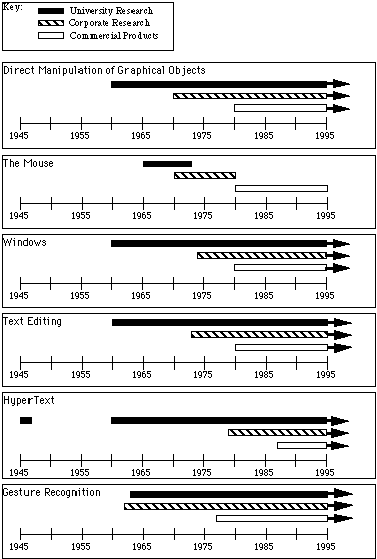 |  | 
|  |  |  |  |
 |  | 
|  |  |  |  |
|
UI Home  GUI
GUIGUI Great Ideas GUI Demo |
1. Introduction AUTHORS' NOTE. This page and its three successors (linked at the page bottoms) all summarize the rich history of user interfaces. The material here is paraphrased from the comprehensive historical overview article by Brad A. Myers, "A Brief History of Human-Computer Interaction Technology," ACM Interactions 5, 2 (1998), 44-54. (Available from the ACM Digital Library.) The evolution of Human-Computer Interaction (HCI) has been spectacularly successful, and has fundamentally changed computing. Just one example is the graphical interface used by Microsoft Windows 95, which is based on the Macintosh, which is based on work at Xerox PARC, which in turn is based on early research at the Stanford Research Laboratory and at the Massachusetts Institute of Technology. Another example is that virtually all software written today employs user interface toolkits and interface builders, concepts which were developed first at universities. Even the spectacular growth of the World-Wide Web is a direct result of HCI research: applying hypertext technology to browsers allows one to traverse a link across the world with a click of the mouse. Interface improvements more than anything else has triggered this explosive growth.  Approximate time lines showing where work was performed on some major technologies. Basic Interactions |